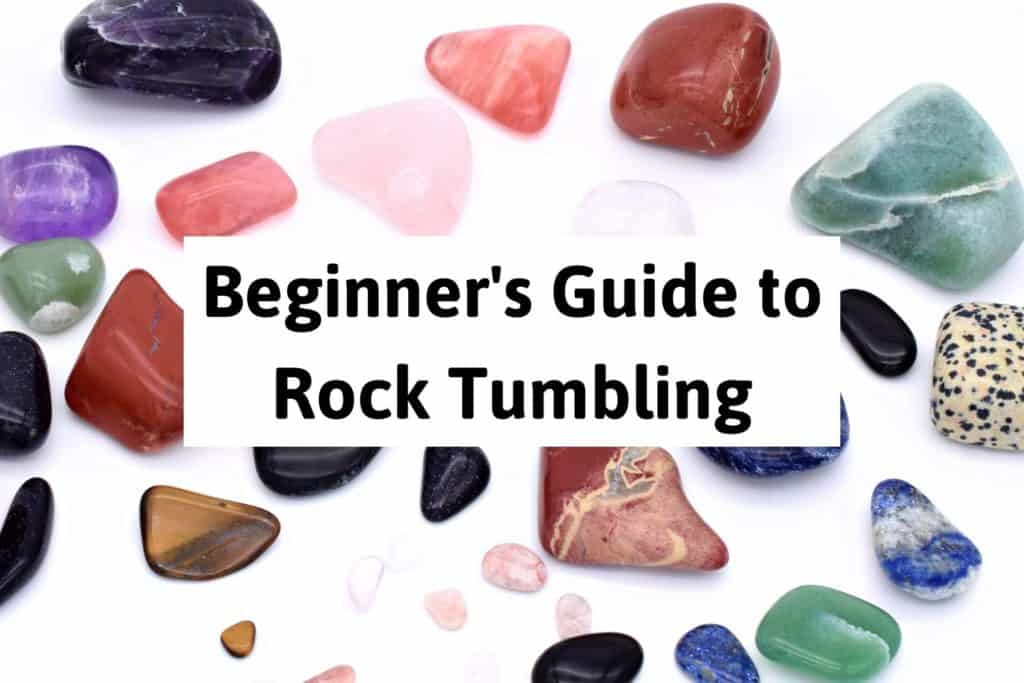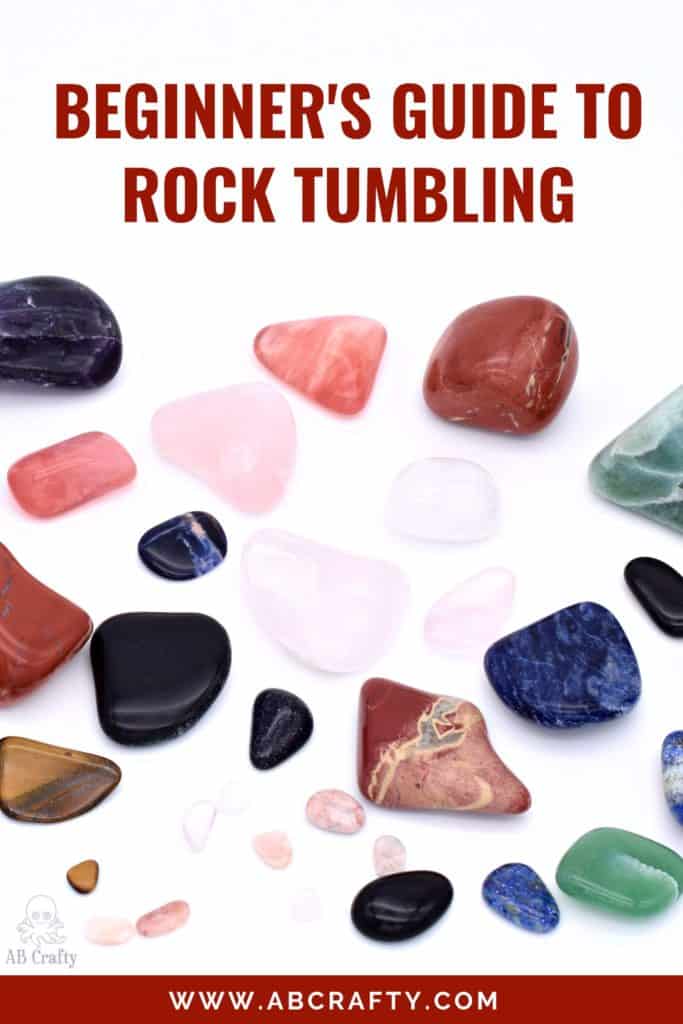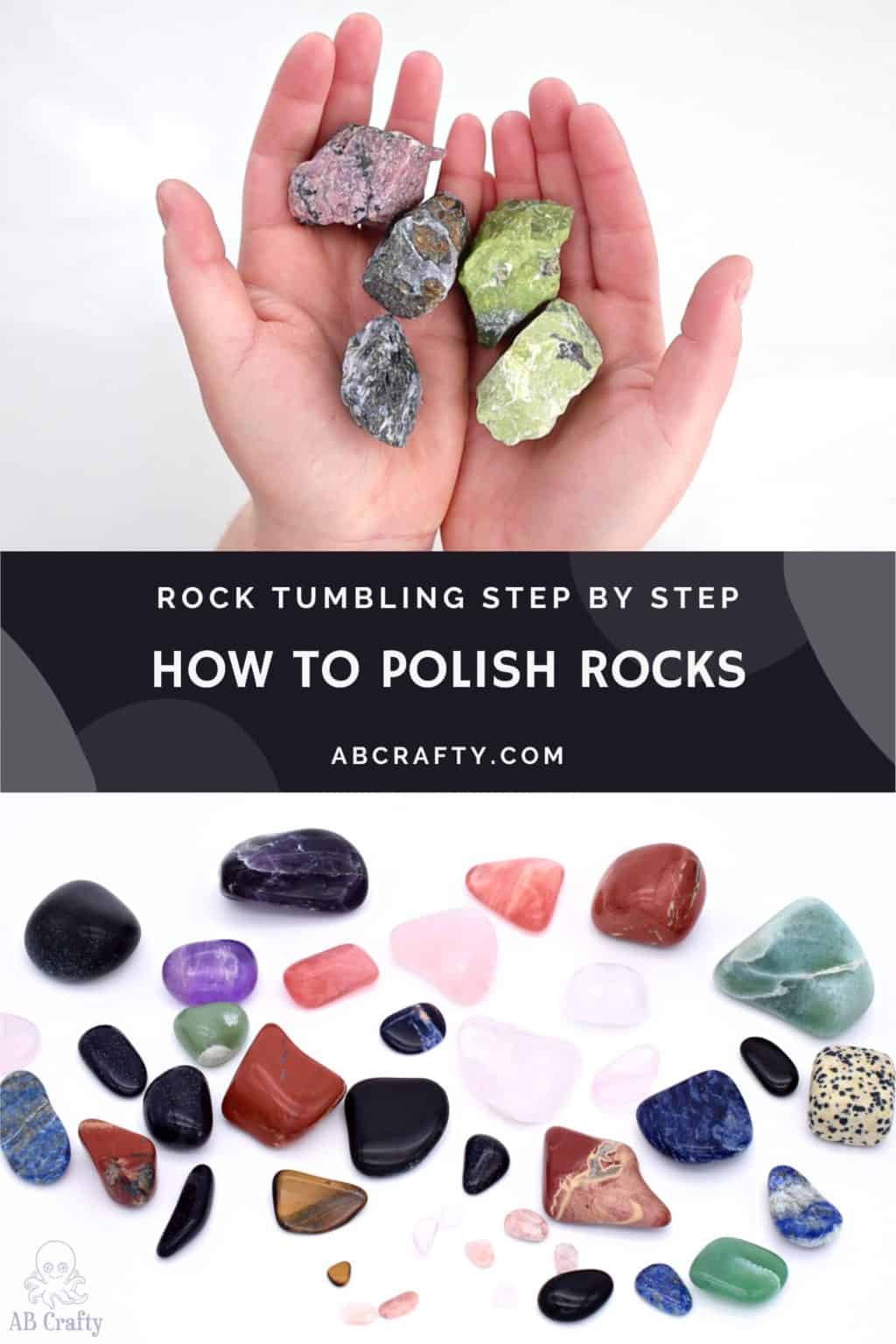Rock Tumbling 101: Beginner’s Guide to Polishing Rocks
Home » Blog » DIYs and Craft Projects » Rock Tumbling 101: Beginner’s Guide to Polishing Rocks
-
Daniela Kretchmer
- Updated: Mar 22, 2025
- Agate, Craft Supplies, Crystals, Geode, Lapidary, Nature, Rocks

This guide to rock tumbling provides all the information you need to get started, including tips on choosing the right stones, using a rock tumbler, and polishing them to perfection.
Table of Contents
When I received a rock tumbler to test, I had no idea that I would become obsessed with rock tumbling. It’s so much fun to take a “boring” rock and make it shiny and smooth, which is why I’ve included it in my list of the best gifts for crafters. And the polished rocks can be used in other projects, which just makes the whole process even more enjoyable.
If you’re looking for a new project to try, rock tumbling is definitely something you should consider! But be careful though, you might become just as obsessed as I am. I have most definitely spent the last couple weekends searching for rocks to tumble – I’m officially a rockhounder.
This beginner’s guide provides all the information you need to get started tumbling rocks, including tips on choosing the right stones, using a rock tumbler, and polishing them to perfection. If you’re in the market for a polisher, these are my recommendations.
If you want to make some beautiful rocks you can eat, try these candy agate slices. Or grow your own crystals with these borax crystal ornaments.
Get the latest DIY tutorials, reviews, and crafting updates
You'll never be spammed and can unsubscribe at any time
Note: Some links in this post may contain affiliate links, which means at no cost to you, I may earn a commission.
Don’t forget to pin it so you can easily come back to it later!

What is Rock Tumbling?
Rock tumbling is the process of polishing rocks and minerals in a rock tumbler (such as this). This involves adding stones or minerals to the rock tumbler along with some abrasives, such as grit, fillers, and water. The way it works is rock tumbler rotates, causing the abrasive particles to rub against the rocks, and over time the rocks become smooth, shiny, and round.
The steps I outline here are how to polish rocks using a rotary rock tumbler (the ones with a spinning barrel). You can also polish rocks by hand or with a vibratory tumbler. I have a full guide on how to choose a tumbler for your needs.

Materials Needed for Rock Tumbling
- Rock Tumbler or Rock Tumbling Kit – this is my favorite beginner machine and this one is my favorite professional machine
- Grit (if not using a kit) – this is my favorite
- Ceramic Media Filler or Plastic Pellets (if your kit doesn’t come with some) – I prefer ceramic and this set comes with the grit and ceramic. You can also get the ceramic on its own from here.
- Rocks (if not using a kit) – You can collect your own or purchase them. I got my own stones from Vina’s Healing Crystals, Rock & Tumble and Meta Earth on Etsy and from Agira Jewels on Amazon.
- Mesh Bag (I used the one from this kit, but you can also get one on Amazon)
- Small Strainer (most kits come with one, but you can also get one on Amazon)
- Screwdriver, optional (some kits come with them, but I’m also weirdly obsessed with the one I have. In case you’re curious, it’s this one)
- Bucket
- Dish Soap – this is the kind I’m using since it doesn’t have dyes or fragrance
- Paper Towels
- Face Mask – this is the one I have and I have found it to be the most comfortable
- Rotary Tool – optional (this is the one I have)


